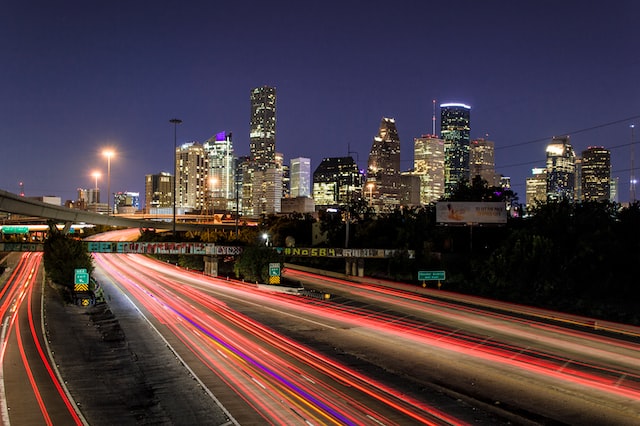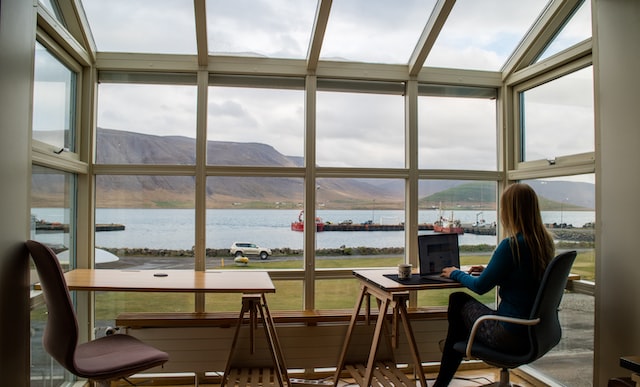Posted on September 15th, 2022
 The adoption of new and exciting technologies has accelerated at a previously unforeseen pace in recent years, with the impact of the rapid changes that ensued now being felt across a number of industries. In the case of the real estate industry, the proliferation of proptech (property technology) has proven to be a significant factor changing businesses around the globe. In this article, we’ll take a deep dive into proptech and assess both its current and future impact on the commercial real estate market. It should also be noted that proptech encompasses both commercial and residential real estate technology, however, for the purposes of brevity we will only be exploring the commercial proptech sector.
The adoption of new and exciting technologies has accelerated at a previously unforeseen pace in recent years, with the impact of the rapid changes that ensued now being felt across a number of industries. In the case of the real estate industry, the proliferation of proptech (property technology) has proven to be a significant factor changing businesses around the globe. In this article, we’ll take a deep dive into proptech and assess both its current and future impact on the commercial real estate market. It should also be noted that proptech encompasses both commercial and residential real estate technology, however, for the purposes of brevity we will only be exploring the commercial proptech sector.
What is Proptech?
Proptech, also known as retech (real estate tech), essentially relates to the use of data and technology to help individuals and businesses manage, buy, sell, lease, and research real estate. The concept is not new, since the real estate sector has been using tech software for a number of years to store data, arrange virtual viewings, and help connect buyers and sellers. However, proptech capabilities have massively increased in recent years due to the development of newer and more refined technologies, such as artificial intelligence, Big Data, blockchain, cloud computing, and the Internet of Things.
Recently, we’ve seen unprecedented acceleration in the proptech field, largely fueled by new consumer expectations and the rapidly changing digital landscape. Moving into 2023, lingering uncertainty and persistent market shifts are tipped to continue spurring proptech’s advancement.
Read More »
Tags: 2022, commercial property, coworking, flexible office space, future of work, innovation, market insights, Office Space, proptech
Posted in 2022, Technology | No Comments »
Posted on September 7th, 2022
 Ensuring that employees feel valued and recognized has never been more important for business leaders than it is in the current world of work. Employers looking to build an environment in which employees are fully engaged and fulfilled with their work have been striving to find new and exciting ways to show their appreciation, with the ultimate aim of bolstering company culture and retaining top talent. The upheaval to the modern business landscape, brought on by COVID-19 and the long-running lockdowns that accompanied it, have resulted in an unprecedented sea change. Despite the majority of the world returning to some semblance of normality, the ripple effects are still being felt, with marked shifts in employee priorities, perceptions of management, and workplace desires.
Ensuring that employees feel valued and recognized has never been more important for business leaders than it is in the current world of work. Employers looking to build an environment in which employees are fully engaged and fulfilled with their work have been striving to find new and exciting ways to show their appreciation, with the ultimate aim of bolstering company culture and retaining top talent. The upheaval to the modern business landscape, brought on by COVID-19 and the long-running lockdowns that accompanied it, have resulted in an unprecedented sea change. Despite the majority of the world returning to some semblance of normality, the ripple effects are still being felt, with marked shifts in employee priorities, perceptions of management, and workplace desires.
These shifts have been especially noticeable in the changed power dynamic between workers and businesses. Employees are now less likely to put up with mistreatment or less-than-ideal working situations. Instead, they have become more open to jumping ship for better working arrangements, rather than persist with jobs that infringe too much on their wellbeing.
Workplace trends such as improved flexibility in the workplace, including allowances for hybrid schedules and other non-traditional working models, the provision of additional benefits, and the renovation of workspaces to be more human-centric, have all become widely accepted as core to employee experience. The businesses who have arrived late to the party are now scrambling to catch up to competitors who reaped the benefits of quickly adopting some, if not all, of these trends.
Read More »
Tags: 2022, employee engagement, employee recognition, workplace culture
Posted in 2022, Employee Recognition, Office Relations, Office Talk | No Comments »
Posted on September 1st, 2022

Houston Office Market
Latest data from Q2 2022 shows Houston’s total office space inventory at 349.5 million square feet, a significant bump in supply from the mid-2021 figure of 173 million square feet. Despite the increase in stock, there have finally been gains in occupancy, with Q1 signalling this healthy marker for the first time since the start of the pandemic.
There were hints of this recovery at the end of 2021. The trend of last year’s subpar market performance was bucked by Class A and trophy office space (Class A+), which accounted for more than 60% of all leasing activity in Houston during Q3 2021. This positive influence has continued into Q2 2022, with Class A demand being the sole driver for occupancy gains in roughly half of Houston’s office submarkets.
Recently refurbished Class A offices, in developments built after 2005, are bucking the vacancy rate trends. These buildings report only 17% vacancy in Q2 2022, compared to the overall Class A vacancy rate of 25.6%. The new renovation programs undertaken by these mid-age office suppliers have clearly been a hit with Houston businesses, serving to satisfy post-pandemic amenity demands better than their newly developed A Grade counterparts.
Despite these low vacancy rates, the five largest leasing deals during Q2 2022 were for new and Class A CBD office space. This trend can be further illustrated by the newly completed Texas Tower, with occupancy already at 70% leased, despite only opening in the first quarter of 2022. As with the vast majority of major cities in the United States, the Houston CBD appears to be the focal point for the highest activity.
Key Takeaways
- Inventory – 349.5 million square feet
- Overall vacancy – 23.4% (a slight decrease from Q1’s 23.6%)
- Net absorption – negative 90,000 square feet (due to coming off the back of the bumper mid-year figure of +641,7000 when several substantial tenants moved into newly completed offices)
- Availability – 27.6%
- Average asking rents – $30.80 (up 1.9% YOY)
- Investment sales – $156 per square foot (up from $116 in Q2 2021)
Read More »
Tags: 2022, coworking, Houston, industrial, market reports, Office Space, retail, vacancy rates
Posted in Best Cities for Business in the USA, CRE, Houston, Market Overviews | No Comments »
Posted on August 26th, 2022
 Recent years have seen some major U.S. educational institutions enter into partnerships with providers of flexible office space, creating coworking solutions that have already proven to be highly beneficial to both parties. These coworking spaces have served to support students by providing a professional environment where they are encouraged to interact with other college students and engage in networking opportunities. The coworking communities that have been formed on college campuses across the U.S. have also helped to support businesses surrounding these emergent hubs, providing them with direct links to students looking to enter the professional world.
Recent years have seen some major U.S. educational institutions enter into partnerships with providers of flexible office space, creating coworking solutions that have already proven to be highly beneficial to both parties. These coworking spaces have served to support students by providing a professional environment where they are encouraged to interact with other college students and engage in networking opportunities. The coworking communities that have been formed on college campuses across the U.S. have also helped to support businesses surrounding these emergent hubs, providing them with direct links to students looking to enter the professional world.
Prior to 2020, the highly innovative coworking sector served to revitalize the somewhat stagnant office space market; experiencing healthy annual growth and gradually becoming accepted as a legitimate alternative to traditional offices. The shakeup caused by the COVID-19 pandemic, however, decimated the coworking space market, limiting growth and forcing coworking space providers to consider short-term alternatives.
Many of the partnerships made between coworking space providers and higher education institutions have already proven to be tremendously fruitful. The nature of these partnerships are also wide-reaching, with some campuses opening their facilities to serve as coworking spaces and others working directly with shared spaces to create ‘micro-campuses’ for remote students across the globe. Additionally, the partnered development of new coworking facilities within leading tech hubs has spurred greater innovation and investment than would have been previously possible for the hosting university to achieve alone. Ultimately, these higher education institutions have joined with global coworking leaders to uphold campus-like spirits of innovation, human interaction, and collaboration, whilst also introducing students to the professional atmosphere of a shared office space.
To say that this is a match made in heaven is an understatement. Read on to get some insight into how this innovative marriage was started, and how those leading the way are driving innovation, reshaping what constitutes an educational workspace, and influencing the connection between talented students and local businesses.
Read More »
Tags: 2022, campus, college, coworking, shared office space, students, university
Posted in Coworking Space, Office Space Forecasts and Trends, Office Talk | No Comments »
Posted on August 22nd, 2022
Among the many changes brought about by COVID-19, the disruption to work arrangements and mobility patterns is perhaps the most profound.
Since 2020, companies of all shapes and sizes have decided to re-structure their workforce, implementing new working models and providing employees with previously unforeseen levels of mobility. This freedom has resulted in many of these employees re-structuring their lives, relocating to more affordable or personally preferable cities. Moreover, the increased implementation of remote and hybrid office-work models has changed the way employers and employees think about location, causing many workers to reassess the need to live close to major business centers.

Read More »
Tags: 2022, austin, Charlotte, colorado springs, dayton, decentralization, detroit, huntsville, kansas city, nashville, pittsburgh, remote work, sacramento
Posted in Company Relocation, Market Overviews, Office Space Forecasts and Trends | No Comments »
Posted on August 15th, 2022
The life sciences and healthcare sectors are two of the small handful of sectors that have come out stronger on the other side of the COVID-19 pandemic. This article offers an overview of relevant U.S. market data, as well as the way in which specialist office providers are serving the demands of businesses looking to house themselves in mixed-use office spaces that include both traditional desks and lab space.

Mixed-Use Office Space in the Life Sciences Sector
While offices occupied by countless other industries emptied virtually overnight in response to the pandemic, life sciences companies stayed put — with some even opting to move to larger premises to accommodate additional employees. In 2021, the sector was still attracting millions of dollars in investments — particularly in the fields of Biotech and Medtech — due to their status as safe, recession-proof assets. In fact, 2021 saw a record $78 billion of capital investments to life sciences-related companies in the United States, up from the $70 billion seen in 2020.
Rapid expansion also put pressure on these companies to source top talent. In the United States, life sciences is a leader for employment growth. Illustrating this — in Q1 2021 the life science sector had surpassed the tech sector in job creation numbers. Read More »
Tags: 2022, biotech, life sciences, medical office space, mixed-use office space, office conversions, office market report
Posted in Mixed-Use Office Space, Office Renovation, Office Space Forecasts and Trends, Office Talk | No Comments »
Posted on August 8th, 2022

Office Space
As of Q2 2022, we’re continuing to see signs of Atlanta’s increased post-pandemic recovery when compared to its peers. Office occupancy rates have shot up dramatically since Q2 2021, though leasing overall has still not reached pre-pandemic levels. Major players — including Google, Microsoft, Visa, and Airbnb — have been in the process of opening up thousands of high salary jobs in offices throughout Atlanta, heavily contributing to the increased positive sentiment that has permeated throughout the office sector in 2022.
Rents have settled after the turbulent events of the early 2020s. Vacancy rates in the metro are still sitting around 18%, making it harder for providers to hike rates. Overall vacancy rates have dropped from 18.8% in Q1 2022 to 18.4% in Q2, providing more evidence of recovery. Despite this, vacant square footage by volume has increased in the metro area, with just over 43 million sq/ft vacant in the middle of 2022 representing a rise compared to the same time in 2021, which saw 42 million sq/ft of vacant office space.
Vacancy rates in Midtown are down to 19% in Q2 2022, compared to 22% in Q2 2021. South Atlanta still shows the lowest vacancy rates across the metro area at 11.7%, though this is up from the Q2 2021 figure of 10%. Despite this increase, recovery is still trending positively when compared to other areas in Atlanta — though reaching the healthy metrics of 2019 is still a ways off. Read More »
Tags: 2022, Atlanta, Commercial Real Estate, coworking, industrial space, market overviews, Office Space, statistics
Posted in Atlanta, Georgia, Market Overviews, Office Space Forecasts and Trends, Trends and Statistics | No Comments »
Posted on February 24th, 2022
 The US office market struggle to get back on its feet for most of 2021, despite the year starting with the expectation that this arm of the commercial real estate market would be on its way to recovery by Q3 to Q4. Ultimately, the emergence of the Delta and Omicron variants of COVID-19 resulted in forecasts being revised, and the recovery horizon was pushed to 2022.
The US office market struggle to get back on its feet for most of 2021, despite the year starting with the expectation that this arm of the commercial real estate market would be on its way to recovery by Q3 to Q4. Ultimately, the emergence of the Delta and Omicron variants of COVID-19 resulted in forecasts being revised, and the recovery horizon was pushed to 2022.
We’ve collected a brief overview of the trends, figures, and projections for the 2022 US office space market below, check back frequently in the year ahead for more insight into industry trends and recovery projections.
Economic Indicators Tipped to Improve
There are many factors influencing office market performance, but macro-economic indicators are some of the most critical. As we settle into 2022, a decline in unemployment is expected to be one of the most important factors underscoring the recovery of the office market. Recent data from the U.S. Bureau of Labor Statistics outlined a small uptick in unemployment in January 2022, moving from 3.9% at the end of 2021 to 4.0% to end the first month of the new year. Read More »
Tags: Commercial Real Estate, Office Market Trends, Office Rental, Office Space, Office Space Trends and Forecasts, Office Talk, USA
Posted in Office Space Forecasts and Trends, Office Talk, Trends and Statistics, Uncategorized | No Comments »
Posted on February 11th, 2022

Notable Office Market Insights
- Ongoing recovery is the main theme, continuing the trend seen in most office markets throughout 2021.
- Positive absorption indicators.
- Slight increase in rental rates.
- Marked differences in occupancy levels, vacancy rates and general performance from city to city.
- Remote working practices are still commonplace in key markets, such as San Francisco.
- 142 million square feet of office space currently under construction.
Lease Rates & Asking Rents
Recent data from Commercial Edge outlines a nationwide rental listing rate average of $38sq/ft in January 2022. These figures may be seen as somewhat inflated due to the number of high quality spaces currently listed due to being vacant, with Class A workspaces being listed at much higher prices.
According to Avison Young, Q4 average rental prices per square foot in gateway markets were as follows:
Read More »
Tags: Boston, chicago, Commercial Real Estate, Dallas, dc, Florida, Houston, Los Angeles, Manhattan, new york, office market report, Office Market Trends, Office Space, Office Talk, San Francisco, Texas, USA
Posted in National Market Reports, Office Space Forecasts and Trends, Office Talk, Real Estate, Trends and Statistics | No Comments »
Posted on December 15th, 2021
 In September 2021, 4.4 million Americans quit their jobs. This staggering statistic, combined with the fact that one in four workers had already left a job in the last 12 months, illustrates the clear reality that workers are resigning at significantly higher rates than prior to the COVID-19 pandemic. Despite the turmoil the pandemic has brought to the United States economy, workers seem more willing than ever to pivot careers and quit their jobs.
In September 2021, 4.4 million Americans quit their jobs. This staggering statistic, combined with the fact that one in four workers had already left a job in the last 12 months, illustrates the clear reality that workers are resigning at significantly higher rates than prior to the COVID-19 pandemic. Despite the turmoil the pandemic has brought to the United States economy, workers seem more willing than ever to pivot careers and quit their jobs.
Origins of the Great Resignation
In the 20 years prior to February 2021, the resignation rate in the United States had never surpassed 2.4% in any given month. However, around a year into the COVID-19 pandemic, this changed. Typically, resignation rates are seen to decrease during periods of high unemployment, as was seen in the immediate wake of the pandemic and the uncertainty it generated. More recently, experts have discussed the so-called ‘Great Resignation’, a phrase that is linked to the recent shift that has seen employees leaving their jobs to explore other options.
Read More »
Tags: covid-19, Employment, hybrid work, statistics, the great resignation
Posted in Office Relations, Trends and Statistics | No Comments »
 The adoption of new and exciting technologies has accelerated at a previously unforeseen pace in recent years, with the impact of the rapid changes that ensued now being felt across a number of industries. In the case of the real estate industry, the proliferation of proptech (property technology) has proven to be a significant factor changing businesses around the globe. In this article, we’ll take a deep dive into proptech and assess both its current and future impact on the commercial real estate market. It should also be noted that proptech encompasses both commercial and residential real estate technology, however, for the purposes of brevity we will only be exploring the commercial proptech sector.
The adoption of new and exciting technologies has accelerated at a previously unforeseen pace in recent years, with the impact of the rapid changes that ensued now being felt across a number of industries. In the case of the real estate industry, the proliferation of proptech (property technology) has proven to be a significant factor changing businesses around the globe. In this article, we’ll take a deep dive into proptech and assess both its current and future impact on the commercial real estate market. It should also be noted that proptech encompasses both commercial and residential real estate technology, however, for the purposes of brevity we will only be exploring the commercial proptech sector.  Ensuring that employees feel valued and recognized has never been more important for business leaders than it is in the current world of work. Employers looking to build an environment in which employees are fully engaged and fulfilled with their work have been striving to find new and exciting ways to show their appreciation, with the ultimate aim of
Ensuring that employees feel valued and recognized has never been more important for business leaders than it is in the current world of work. Employers looking to build an environment in which employees are fully engaged and fulfilled with their work have been striving to find new and exciting ways to show their appreciation, with the ultimate aim of 
 Recent years have seen some major U.S. educational institutions enter into partnerships with providers of flexible office space, creating coworking solutions that have already proven to be highly beneficial to both parties. These coworking spaces have served to support students by providing a professional environment where they are encouraged to interact with other college students and engage in networking opportunities. The coworking communities that have been formed on college campuses across the U.S. have also helped to support businesses surrounding these emergent hubs, providing them with direct links to students looking to enter the professional world.
Recent years have seen some major U.S. educational institutions enter into partnerships with providers of flexible office space, creating coworking solutions that have already proven to be highly beneficial to both parties. These coworking spaces have served to support students by providing a professional environment where they are encouraged to interact with other college students and engage in networking opportunities. The coworking communities that have been formed on college campuses across the U.S. have also helped to support businesses surrounding these emergent hubs, providing them with direct links to students looking to enter the professional world.


 The US office market struggle to get back on its feet for most of 2021, despite the year starting with the expectation that this arm of the commercial real estate market would be on its way to recovery by Q3 to Q4. Ultimately, the emergence of the Delta and Omicron variants of COVID-19 resulted in forecasts being revised, and the recovery horizon was pushed to 2022.
The US office market struggle to get back on its feet for most of 2021, despite the year starting with the expectation that this arm of the commercial real estate market would be on its way to recovery by Q3 to Q4. Ultimately, the emergence of the Delta and Omicron variants of COVID-19 resulted in forecasts being revised, and the recovery horizon was pushed to 2022.
 In September 2021,
In September 2021,